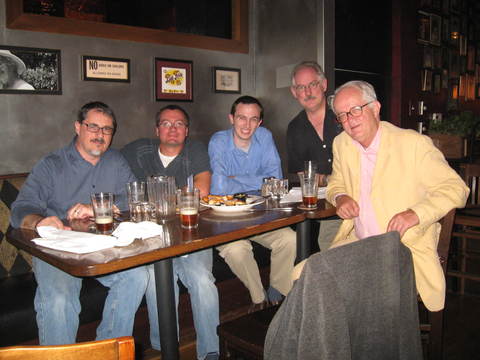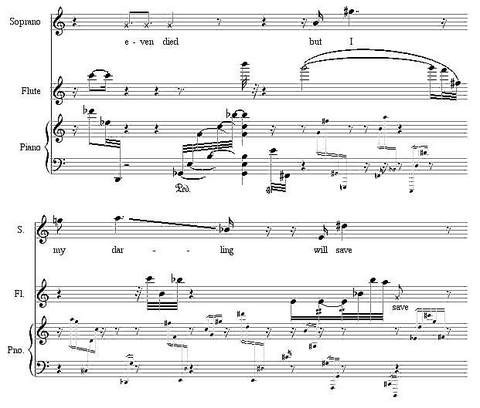PostClassic: August 2009 Archives
Part 1 1:03:09
Part 2 1:13:48
Part 3 1:06:54
Part 4 1:05:19
It's not a professional-level recording, though I made it on my wonderful Sony PCM D-50, which has totally changed my life. I had to switch pianos at one point, because the freshmen arrived at Bard halfway through, and the piano I started on was in a room where high heels clicking through the hallways were too audible (and those were the guys!). But it's the first complete recording, with all the material contained in the score. It lasts only four hours, and I think I could have gone longer, but every note you hear is in the score, and there is virtually nothing omitted.
Dennis's surviving recording contained only the first 112 minutes of the piece. What I am playing is an exact transcription of those 112 minutes, as identical to the original as I could make it, and then I improvise the remainder of the piece according to rules I obtained by analyzing the relationship of the recording to the score. The reason for sticking to the transcription for the first 112 minutes is that there are aspects of the piece not ascertainable from the score; the score was derived from the original tape rather than the other way around, and Dennis's letter to me about it stated that "the recording must stand as the primary definition example of the piece." Subsequent performances need not be so slavishly faithful to the recording, but this first exposure has got to get the piece across as Dennis played it, so musicologists can know exactly what they're dealing with. Before you go there, the idea of this piece from the beginning was that it is a (loosely) notated piece, that any so-minded pianist could play it with complete authenticity. Dennis was not a great jazz pianist, not a jazz pianist at all in fact, and there is nothing technical nor idiosyncratic about his playing that another pianist couldn't sufficiently imitate. Dennis is flattered that Sarah Cahill and I are doing this, just as Harold Budd is flattered that Sarah is playing Children on the Hill. If the composers are thrilled, you have no theoretical basis on which to disapprove.
* * * * * * * * * * * * * * * * * * *
There is a hilarious sequence of situations in Mark Twain's Innocents Abroad in which Twain and his fellow tourists drive an Italian tour guide to absolute distraction with questions of surreal incomprehension:
Our guide there fidgeted about as if he had swallowed a spring mattress. He was full of animation - full of impatience. He said:
"Come wis me, genteelmen! - come! I show you ze letter writing by Christopher Colombo! - write it himself! - write it wis his own hand! - come!"
He took us to the municipal palace. After much impressive fumbling of keys and opening of locks, the stained and aged document was spread before us. The guide's eyes sparkled. He danced about us and tapped the parchment with his finger:
"What I tell you, genteelmen! Is it not so? See! handwriting Christopher Colombo!--write it himself!"
We looked indifferent - unconcerned. The doctor examined the document very deliberately, during a painful pause. - Then he said, without any show of interest:
"Ah - Ferguson - what - what did you say was the name of the party who wrote this?"
"Christopher Colombo! ze great Christopher Colombo!"
Another deliberate examination.
"Ah - did he write it himself; or - or how?"
"He write it himself! - Christopher Colombo! He's own hand-writing, write by himself!"
Then the doctor laid the document down and said:
"Why, I have seen boys in America only fourteen years old that could write better than that."
"But zis is ze great Christo- "
"I don't care who it is! It's the worst writing I ever saw. Now you musn't think you can impose on us because we are strangers. We are not fools, by a good deal. If you have got any specimens of penmanship of real merit, trot them out! - and if you haven't, drive on!"
Half of the comments I got on my recent Harold Budd posting, several of them by people criticizing me while admitting that they hadn't listened to the music they were criticizing me for, were about on this level. It's not as funny from the tour guide's perspective. I'm offering you the minimalist equivalent of Christopher Columbus's handwriting, neither for your critique nor for your approval, but because I have the information, I enjoy disseminating it, and I know there are people interested. The claims I make for this music are that the tape said the piece dated from 1959 and the performance from 1962, and that La Monte told me that this piece inspired The Well-Tuned Piano. If you have evidence to confute these claims, I'll be curious to hear it; otherwise, criticizing me for this reveals a misunderstanding of the situation. This is musicology, not American Idol. If this recording or the piece isn't your cup of tea, that's OK, I understand, but I can't alter the results of my research to suit your squeamish and waffling tastes. If you want your comment posted - respond appropriately.
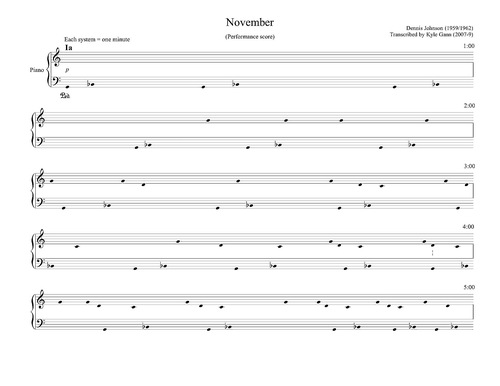
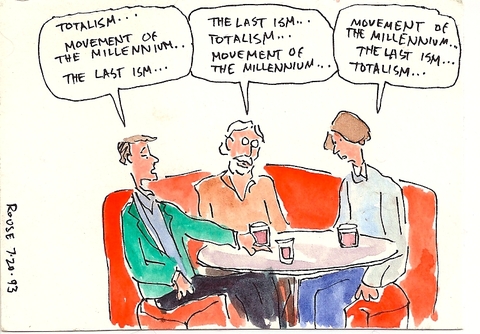
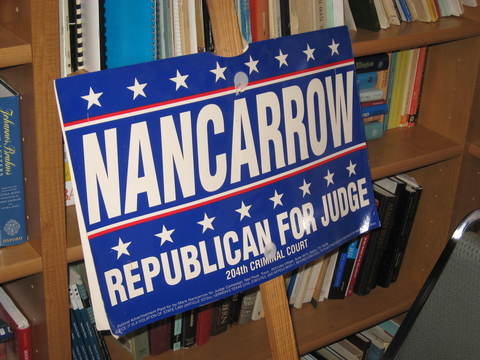
For many years I have toyed with the idea of transcribing this wonderful recording, but given the speed of Budd's cascading arpeggios in the 13-minute middle section, I doubted the feasibility until digital software rendered it possible to slow it waaaaay down (sometimes to 1/5th-speed) without changing the pitch, EQ-ing it to bring out selective registers. It's taken dozens of hours of ear-stretching work over the last two years, but I've done it, and the amazing Sarah Cahill will finally recreate this performance at Kansas City on Friday, Sept. 4, at the Second International Conference on Minimalist Music. It's the most difficult musicological feat I've ever attempted. The Well-Tuned Piano was child's play by comparison.
You may (and should) be familiar with the five-minute version of Children on the Hill on Budd's 1981 recording The Serpent (in Quicksilver) on the Cantil label, rereleased in 1992 on All Saints. That version never changes key or tempo, nor deviates from a B-major scale. This version is recognizably similar in motive and atmosphere, but enormously more complex. The main motive on the Cantil version is B-D#-E; here it is inverted, D#-E-G#. The opening section is based in B major, but abruptly shifts to D, C, and C#. The rapturous middle section, a torrent of Budd's trademark major-seventh chords, alternates at first between E and Db, but moves upward though D and Eb to an alternation of F and Gb before finally settling back to C# for the ending recapitulation. At no time does the key jump more than a minor third away. Interestingly, each key is associated with a particular textural configuration, so that every return of a key is also the return of a type of arpeggio and melody. Often transitions between keys are introduced by the right hand entering the new key first, so that the left hand resolves a poignant moment of bitonal dissonance. Budd says that he would sometimes use written-down motives on a scrap of paper as a guide, but that these notations are long gone. And, looking at my transcription, he wrote, "I couldn't play that in a thousand years."
Below I post my transcription of the segment from 10:30 to 11:32 on the recording. My rhythms are pretty conjectural, often simply an attempt to get all the notes in the right order. The fact that the piano is run through a harmonizer added to the difficulty. Sarah's working hard, though, and practicing along with the recording to get the unnotatable nuances of rhythm and pacing. I am thrilled that I'm finally going to get to hear this music live again, and get a recording without the crying baby. That kid must be 27 now, and in Kansas City bouncers will be on the lookout for a suspicious 27-year-old.
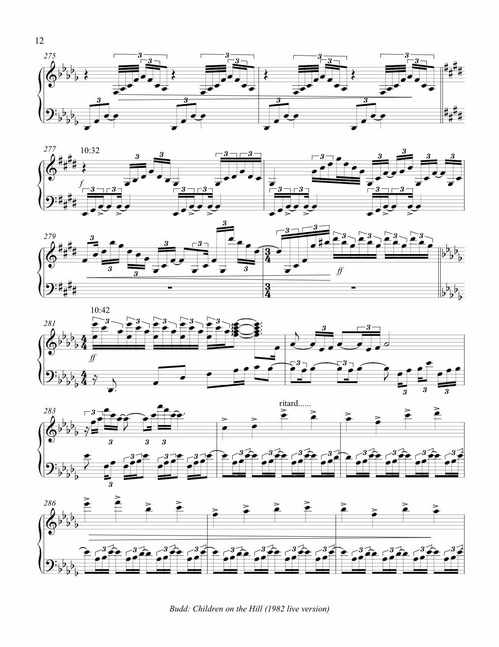
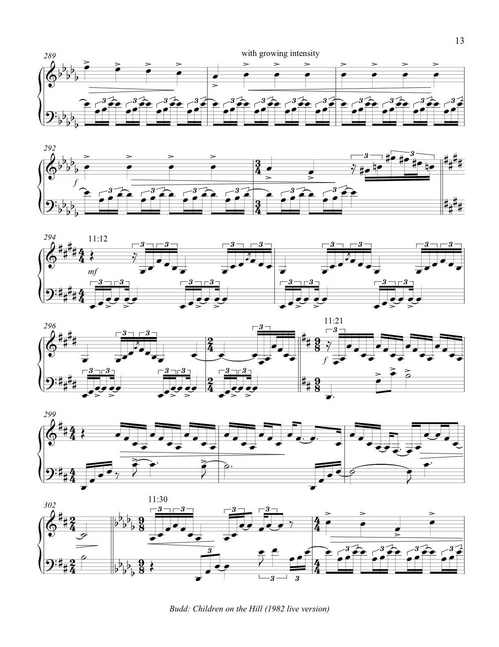
Comments closed. I thought this Budd was for you, but I guess it was for someone else.
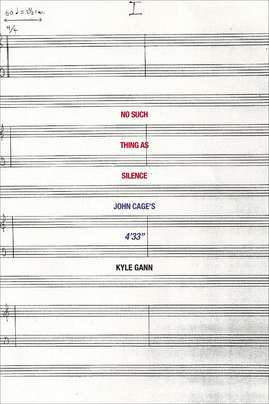
Hans Otte: Das Buch der Klange (excerpt)
Harold Budd: Children on the Hill (long version, transcribed by me from a 1982 performance at New Music America)
Mamoru Fujieda: Patterns of Plants (excerpt)
Bunita Marcus: Julia
Meredith Monk: St. Petersburg Waltz
Elodie Lauten: Adamantine Sonata
Eve Beglarian: Night Psalm (world premiere)
John Adams: China Gates
Harold Budd: Children on the Hill (short version, from the recording)
Terry Riley: Be Kind to One Another
Kansas City's NewEar ensemble will perform the following pieces:
Tom Johnson: Twelve for solo piano
Terry Riley: Autumn Leaves for flute, violin, alto sax, bass clarinet, cello, piano, percussion (the piece just after In C, only heard once since the '60s)
Phill Niblock: Tow by Tom
Vladimir Tosic: Arios for cello and piano
Barbara Benary: Sun On Snow for soprano and mixed ensemble
Jakob ter Veldhuis: The Body of Your Dreams for piano and boombox
Tom Johnson: Narayana's Cows for flute, violin, alto sax, bass clarinet, cello, piano, percussion (Tom Johnson, narrator)
Tom Johnson and Robert Carl will give keynote addresses. And there will be 49 papers presented, on topics from Feldman to Eric Richards to David Lang to Phill Niblock to Jim Fox to Julius Eastman and many others. I'm excited. The papers are listed below, in approximately the order presented, though we're still moving things around. (Note the paper by my friend Dragana Stojanovic-Novicic: she's reporting on a Serbian composer, Vladan Radovanovic, who claims to have been the first minimalist.) Or you can just go see everything at the official web site and register to show up and join us. The student rate, by the way, gets you into everything for 90 bucks, so it's a steal.
'The music you write is about the composers you like': Intertextuality in the work of Louis Andriessen - Maarten Beirens (KU Leuven, Belgium)
Metamorphic Meanings? Exploring Glass's Intertextual Soundtracks - Tristian Evans (Bangor University, Wales, UK)
'Taking a Line for a Second Walk': Mapping Intertextuality in Nyman - Pwyll ap Sion (Bangor University, Wales, UK)
Phill Niblock and identity in reductionism - Richard Glover (University of Huddersfield)
Phill Niblock: Documentation, Analysis, Listening - Keith Potter (Goldsmith College, London)
Minimalism and the Moving Image: The films and music of Phill Niblock - Rich Housh (University of Kansas)
Same Music, Different Perceptions? Steve Reich's Six Pianos and Six Marimbas as Case Study - Kyle Fyr
Tehillim and the Fullness of Time - Gretchen Horlacher (Indiana University)
Early Steve Reich and Techno-utopianism - Kerry O'Brien (Indiana University)
Perceptible Processes in Reich's Ostinati: Arch Form and Multiple Downbeats in
Music for Eighteen Musicians - Brad Osborn (University of Washington)
Samples and the Material they create in Steve Reich's City Life - Abigail Shupe (University of Western Ontario)
Good Trains and Bad: Steve Reich and the Holocaust in American Musical Life - Sumanth Gopinath (University of Minnesota)
Images of Lincoln: Glass's Minimalist Contribution to American Historical Memory
of the Civil War - Thomas J. Kernan (University of Cincinnati College-Conservatory of Music)
Meaning in minimalist opera: Investigating the subtext of Doctor Atomic - Sean Atkinson (University of Texas at Arlington)
Portraits of the Chinese Landscape in John Adams's Nixon in China
Timothy Johnson (Ithaca College)
From Arles to zaftig: an introduction to the operas of Michael Gordon - Jedd C. Schneider (University of Missouri - Kansas City)
Disorientation and Loss as a Response to Arvo Pärt's festina lente - David Dies
"They Just Go Round and Round": Circularity and Dystopia in The Truman Show - Rebecca M. Doran Eaton (The University of Texas at Austin, Texas State University-San Marcos)
A Postminimalist Analysis of Julius Eastman's Crazy Nigger - Andrew Hanson-Dvoracek (University of Iowa)
Julius Eastman's Musical Worlds - Ellie M. Hisama (Columbia University)
Becoming Temporal and Entropic: The aesthetics of time in Tenney's Having Never
Written a Note for Percussion and Robert Smithson's earth work - Joseph Di Ponio
David Borden's Double Portrait: Minimalist Aesthetic With Linear Time - R. Andrew Lee (University of Missouri-Kansas City)
A Personal Encounter with the Shaman of Vertical Temporality: Charlemagne
Palestine - Phillip Henderson (The University for the Creative Arts)
La Monte Young: Time and identity of the work - Jean-Pierre Caron
Reconstructing November - Kyle Gann (Bard College)
Mikel Rouse's Failing Kansas - David McIntire (University of Missouri at Kansas City)
An Ethnography of Acoustical Positivism - Jeremy Grimshaw (Brigham Young University School of Music)
La Monte Young's 1960's: The Black LP - David McCarthy (University of Minnesota)
Process as Means and End in Minimalist and Post-Minimalist Music - Galen Brown
Prime Times - Paul Epstein
Beyond Drumming: Process in the Music of David Lang - Kevin Lewis (College-Conservatory of Music, University of Cincinnati)
Metal as a Gradual Process: Minimalist Rhythmic Practices in the Music of Dream Theater - Greg McCandless (Florida State University)
David Lang's Postminimalist Work: the so-called laws of nature and the Influence of
Steve Reich - Andrew M. Bliss (University of Tennessee at Martin)
The Fear of Forgetting: Decasia and Contemporary "Memory Culture" - Jason Hibbard (University of Cincinnati College-Conservatory of Music)
Morton Feldman, Proto-Minimalist
Brett Boutwell (Louisiana State University)
Dialectic of Dialects: American Minimalist Composers Talk Tradition - Sara Melton (University of Cincinnati College-Conservatory of Music)
Minimal Music and the Influence of Abstract Expressionism - Elisa Weber (Florida State University)
Painting in Time and Music through Space: A Comparative Analysis of the Music of
Phill Niblock and the Art of Ad Reinhart, Mark Rothko, Richard Serra, and Carl Andre - Erika King (Bennington College)
An artistic paradigm realised: Negative space, musical minimalism and
compositional technique - Christopher Garrard (University of Durham)
Speaking Through Singing: The Spoken In the Vocals of Steve Reich's Different
Trains and Arnold Schoenberg's Ode to Napoleon Buonaparte, Op. 41 - Andrew McIntyre (Indiana University)
"How shall we sing the Lord's song in a strange land?" - John Pymm (University of Wolverhampton)
The Reductionist Model as the Forerunner of Minimalist "Action": Six Two-part Chorales by Vladan Radovanovic - Dragana Stojanovic-Novicic (University of the Arts, Belgrade)
Jim Fox's The City the Wind Swept Away: Considering Juxtaposition and Decay as
Structure - Scott Unrein (University of Missouri-Kansas City)
Sample Savvy: Identification and Structure in Electronic Dance Music - Travis A. Allen (University of California, Santa Barbara)
Phasing and Form - Ryan Tanaka
Maximizing Minimalism in Michael Torke's Four Proverbs - Kathy Biddick Smith
Eric Richards and the Empirical Search for Truth and Beauty -
Eric Smigel (San Diego State University)
The String Theory of Repetition in Sound: From the mid-20th century to the Post digital - Greg Shapley (University of Technology, Sydney)
There was an agreement among journalists after about 1970, when America took a sharp turn to the right, to call all music that did not use traditional instruments - the orchestra or combinations of orchestral instruments - "experimental." This was a greater disappointment to me than most things that journalists do, because it showed a deep misunderstanding of the way things were. There were noble aspirations among a few younger conductors to revive the relationship between the composer and the orchestra, but there were no orchestras to speak of... there were no commissions of the sort that might be valuable to the composer, in the sense that a commission involves some sort of discussion between the composer and the orchestra; and most important of all, there was never any rehearsal time, in case an idea did not work. Orchestra commissions of the time always sounded like they were being sight-read, which in fact they were. I am sorry to say that this is still largely the case....
I think that even for the best composer (better than I am), ideas don't always work. That is why the orchestra pece without lots of rehearsal is in some way doomed. And dreaded by the composer...
[A] friend told me that a distinguished violinist told him that in his youth he had played La Mer with Ernest Ansermet's Orchestre de la Suisse Romande, and had remarked to Ansermet that the violin part was not the same that he had known with other orchestras. Ansermet replied that Debussy said that he had always regretted the published violin part, and so with Ansermet's approval had written a new violin part. (Which one do we hear now?)
So, in this situation it is actually the American orchestra music that is truly "experimental." When you have thought about other kinds of musical ideas, and worked with, say, electronic music for most of your composing life, the composition is anything but experimental. It is the epitome of expertise. It may be aleatoric or purposefully unpredictable in its specific sounds, or purposefully exploratory of a sound, but experimental is the wrong word, and its use has more or less divided composers among themselves....
It is a problem to write orchestra pieces that can be played after one or two rehearsals. I can't even learn my own compositions in a six-hour rehearsal. (Recently I was listening to a performance of La Mer on the radio and remarking to myself on its difficulty and it occurred to me that is a composer wrote La Mer today, no orchestra could play it. Not enough rehearsal time.) If it were not for this drastic restriction, orchestras and orchestra literature would not be in such dire straits. And there would probably be a very different idea about electronic music, and so probably a different kind of electronic music....
- Robert Ashley, liner notes to Superior Seven, 1995
In 1997 the American Composers Orchestra, urged by board member Tom Buckner and with evident reluctance, commissioned Bob to write When Famous Last Words Fail You, for singers and orchestra. The orchestra members in the piece are cued by the lead singer's words, so the conductor merely adjusts volumes, as at a mixing board. Dennis Russell Davies ran through the piece Thursday morning before a Saturday performance. The parts had just been handed out, so everyone was clearly sight-reading. There was a planned meeting afterward to discuss the technique of the piece; that was cancelled. There was a scheduled dress rehearsal; that was cancelled. The performance was the second run-through of a piece that had never been rehearsed, and sounded awful, not at all the way Bob imagined it.
A classical music world that treats great composers that way deserves the worst that can possibly happen to it.
Comments closed.
Truth, as has been said, is in the details.
There have been some comments to this blog lately lamenting relativism in aesthetic judgments, saying that if we give up the idea of objective musical standards, then we can't argue that classical music should be supported over pop music, everything is relative, and our entire art is doomed, everyone will listen to rap and pop because there's no factual standard on which to defend classical music. I believe there is no such thing as complete objectivity, but I also believe there is no such thing as complete subjectivity. There's always something there that our perceptions did not create. (Had a fun e-mail argument about this with Glenn Branca, once. He proved to me there was no complete objectivity and I proved, I think, the impossibility of total subjectivity. It ended amicably.)
I've alluded here before to an unforgettable conversation I once had with John Luther Adams, trudging in high winds and freezing cold through the snowy woods around Fairbanks, and I've promised to tell you about it someday. Maybe this is the time. John and I put together a registry of musical virtues that was isomorphically analogous to a classification of audiences.
For instance: there are people for whom the best music must involve innovation. These people are likely to value Varese, Partch, Cage. There are others who value craftsmanship above all else. These people tend to like Hindemith, Sessions, perhaps Ligeti. Other people feel that music should be, above all else, emotionally true; perhaps they gravitate toward Barber, Vaughan Williams, maybe Messiaen. There are people who love music for its sonic lushness and sensuousness, who may relish Takemitsu and Feldman. There are people who value clarity, who value simplicity, who value intellectualism, who value memorability, who value physicality, who value theoretical rigor. Most people value several of these virtues, and we could create Venn diagrams of audiences who love different new musics because of the specific virtues they possess. The innovation + emotive sincerity intersectors love Ives. The intellectualism + sensuousness people love Takemitsu. That's what John and I were coming up with.
I think these virtues could be categorized, and I think it would be a worthwhile and revealing musicological exploit. I think it could become the prolegomena to a sociology of new-music (and other) audiences.
Where subjectivity comes in is that there is no objective criterion by which we can proclaim that craftsmanship is a higher virtue than innovation or sensuousness. We just can't. One type of personality will value the careful, revising craftsman over the visionary innovator who comes up with something radically new, and that's what makes horseraces. There is no way to objectively rank the artistic virtues. They are too closely allied to the structure of personality. Where objectivity comes in is in determing what innovation or craftsmanship is. Say you love innovation but don't believe Varèse was innovative? Good luck. I want to read the treatise proving your point, but if it doesn't grab me in three sentences I'm trashing it. We can prove on paper that Varèse was an amazing innovator, whether that impresses you or not. I happen not to care much for Varèse because, for me, innovation is kind of wasted if the music doesn't grab me emotionally, and his doesn't; but I grant he was innovative. You think Crumb is a better composer than Sessions? You have my blessing. You think Crumb was a better craftsman than Sessions? You're an idiot. If there was a virtue that Sessions nailed to the floor immovably and for all time, it was craftsmanship. Maybe lacking in spontaneity, lacking in originality, in imagination, in goal-directedness, in sensuouness, arguably, but craftsmanship? If craftsmanship means anything in music, Sessions had it in spades. We can argue whether Partch's music shows good craft, and give examples; that's a still partially subjective but more limited and rational dispute than whether he was a "good composer."
The only question then is, how high is craftsmanship in the list of musical virtues? For me, personally - and no one else is bound by this - craftsmanship is one of the secondary virtues. I fancy that there is considerable craftsmanship in my music, but I do not want it calling attention to itself, and I try to keep it in the background. Though I do value craftsmanship, I'm not a fan of the sound of exposed craftsmanship, but a believer in Mozart's "artless art." I feel that what an artist has to say is more important than how well he says it, and for an impetuous sincerity or an uninhibited imagination I will easily forgive a shortage of craftsmanship. If you disagree I cannot refute you, nor can you argue me out of that position because there's no objective basis to do so with. It's just my personality. Or at least, having made more defensible determinations about which music possesses which virtues, perhaps we can have a different argument about which virtues should be accorded a higher place. After all, I have reasons for placing imagination and convincing emotion above innovation, and innovation above craftsmanship, and if I have reasons (as opposed to irrational personal preferences), I can be wrong.
There are people for whom depth is the major musical virtue - and by depth in this context I mean not profundity per se, but the ability of music to reveal more and more layers of meaning on repeated hearings. Depth is certainly a virtue. Many people use this virtue to prize classical music above popular music. I have often had the experience, though, of listening to a pop record and not really appreciating it the first time, but having it grow on me more and more. I've had that experience with pop music as often as I've had it with classical music. Many people who push this virtue use it to prop up the reputation of complex music. But in the early 1980s I turned off a recording of Carter's Double Concerto on what must have been my 75th listening with the score precisely because of that: I wasn't getting any more out of it than I had at the last ten listenings. I had milked it dry. It wasn't yielding anything else.
You want a composer with depth? Robert Ashley. There is so much in his music that pieces I've listened to and even studied for 30 years are yielding up phrases and patterns I've never noticed before. He is utterly inexhaustible. And yet, I don't think Ashley is the kind of composer the depth advocates have in mind. In general I think depth is kind of a red herring, a nice virtue but not truly at the top of anyone's list. The last time I listened closely to Beethoven's Appassionata sonata, I savored it, but I don't really think I found anything I hadn't heard ten years ago. Satie is one of my favorites and I find him extremely profound, but I don't think I'll hear things in Embryons Desséchées the next time I hear it that I haven't noticed before. What's important to me is that I can keep listening to a piece without growing tired of it.
This is where some pop music I like, but not all, falls apart for me. I'm a Waylon Jennings fan, which I don't often admit - must be something in the Texas water. I find his songs inventive and emotionally satisfying, but I can't listen to them often because the production values - canned audience shouts, instrumental bridges so identical that they sound cut and pasted in the audio software - seem plastic and articifical. Once every other year I can ignore that for the great word/tune relationship and the fuck-you attitude, but too soon a second listening and I feel sick.
But in the pop music I love best, like Brian Eno and the Residents, the virtues I enjoy are exactly those I love in the classical music I love best: imagination, inventiveness, emotional connection, memorability. Earlier in my life I searched hard for the DNA that separates pop music from classical, and you know what? I never found it. The more I looked at the pop music I loved, the more exactly its virtues resembled those of my favorite classical music. I never found a line I could draw. The only pop/classical distinction that ever made sense to me was the one Bob Ashley told me on a bar stool in Chicago in 1986: "Over five minutes it's classical, under five minutes it's pop." Accordingly, I've always thought of Schubert's songs as really, really good pop music. And of Brian Eno's Evening Star album, with its long tone poems, as utterly classical. Imagination is near the top of my virtues list, and I hear more imagination in almost any Eno song than in all the Elgar I've ever heard put together.
So all these bloggers who reel on endlessly about the pop/classical problem, and how we have to protect classical music in a pop-oriented world: I simply will not partake. I believe in genres defined by specific, pin-pointable qualities, from reggae to heavy metal to totalism to postminimalism to impressionism to spectralism to to space-age bachelor pad music to bluegrass, but "classical" and "pop" are industry-created categories, economic categories, and they leave no traces for me in the music. Whether I'm listening to a song by Loudon Wainwright III or Brian Eno or Charles Ives or Sir William Walton, I want the relation of melody and accompaniment to words elegantly and creatively handled.
What I will defend is the right of people with different values to have the music of their favorite virtues preserved. Thus I suppose I end up having the same aim as the elitists, but I will not use elitist rhetoric to achieve it. I will not say that "depth," or length, or complexity, or intellectualism - or simplicity, or communicativeness, or innovation, or memorability, or sincerity - is a higher virtue than some other. But I do feel strongly that minorities have their rights, and that those who want to hear craftsmanship, or sensuousness, or intellectualism, or depth have the right to have their music supported. Insofar as most pop music is songs, there are some virtues that no pop music has, virtues that can't be demonstrated in three minutes. The "objective standards" that some of my commenters use against pop music has just as often been used against minimalism and a lot of the other music I love. There are no objective standards. But there is an infinity of objective facts, there is a quasi-infinity of musical virtues, and no majority or plurality has the right to proclaim that we all have to content ourselves with the music that embodies their particular favorite virtues. That is as true for those who would defend classical music from pop-music encroachment as it is for those who would defend minimalism against the classical snobs.
1. Don't talk to yourself
2. Speak only when you're spoken to
3. Make sense
"Don't talk to yourself" is a reminder that talk isn't a part of understanding, but a habit, an arrangement of sounds. The arrangement requires a partner, and thus, historically, marriage followed conversation. "Don't talk to yourself" means to stop arranging things when you're alone, and to not use for yourself what belongs to all of us: sounds. "Speak only when you're spoken to" represents the dilemma of the second historical eon, in which humankind struggled to reconcile its arrangements of marriage and religion, leading to the third eon, in which we make sense: "we have accomplished ourselves, / (Or invented man, as The Philosopher says)."
The background here is that Ashley was, at the time, immersed in a 1976 book that I also read when it was new, Julian Jaynes's The Origin of Consciousness in the Breakdown of the Bicameral Mind. Jaynes's theory was that the ancients, for example the ancient Greeks, had no communication between the hemispheres of their brain, and received messages from the right hemisphere that seemed to come from outside, and they interpreted those messages as the voice of gods. So, for instance, Agamemnon hearing the voice of Apollo was actually hearing an auditory hallucination from his own brain. Later man learned to integrate the two hemispheres, so the voices no longer sounded like they were coming from outside. The book was controversial at the time, but the nitwits at Wikipedia seem to suggest that it has withstood scrutiny. (All the cockeyed ideas I ingested about left brain/right brain theory started with that book.) At the other end, Ashley was convinced at the time that he had a mild form of Tourette's Syndrome, in that he sometimes had to leave parties to let off an involuntary stream of words - and it was in recording those words that Perfect Lives began. So he's actually tracing a presumed history of consciousness from when speech was involuntary and hallucinatory (the eon before "Don't talk to yourself") to its use in creating social connections to its reflexive function in a narrative that gives life meaning - the increasingly conscious employment of language. Ed and Gwyn's wedding is thereby contextualized at that point in human evolution; on top of which, the vegetarian Theosophist Ed is modeled on a guy Ashley knew in high school who wanted to marry his sister, and who is further described in his opera Dust, and so on. The levels never end.
Also Ashley, let us not forget, was kept from getting a music doctorate by my book's arch villain Ross Lee Finney, so instead he worked at the U. of Michigan Speech Research Lab, funded by Bell Laboratories, doing groundbreaking research on the causes of stuttering. And so Ashley's given a lot of thought to the purpose and origins of speech for several decades, and the basic idea of his life's work since 1978 is that language is music. Some people refuse to consider him a composer because they can't understand this simple, crucial, and scientifically defensible point. His opera Foreign Experiences is full of profanity because profanity is how we slow speech down and attend to its sound rather than its sense; and one of my favorite Ashley lines is one I haven't retraced to its source yet: "Who could speak if every word had meaning?" And threaded through his operas you find fragments of an epistemology and a philosophy of language, as in "The Church":
Language has sense built in. It's easy to
Make sense. To make no sense is possible,
But hard. Language does not have truth built in.
It's hard to make truth, which is to stop the search.
So for Ashley language is an arrangement of sounds ("Sound is the only thing we can arrange") that is really music, and its meaning is secondary to its interpersonal and aesthetic functions of binding us together and clarifying our arrangements. He says that Jacqueline Humbert (Linda in Improvement: Don Leaves Linda) and his son Sam pick up the intentions of his operas instantly because they're both from southern Michigan and can catch his inflections: in other words, his operas are about the music of the way southern Michiganders speak.
Now, there are three reactions you can have to all this, and I have all three at once: This is crazy; This is unbelievably profound; and, There's some scientific or historical truth being presented in this oblique way, and I ought to be able to tease it out. But it's all poetry, and so resists both paraphrase and explanation. Perfect Lives is, I've become convinced, one of the great epic poems in the English language, the Paradise Lost of postmodernism. Ashley is the perfect new composer for nonmusicians, because his operas deal with crucially essential stuff outside the music world. You have to read a lot of books to fully trace Ashley's steps, and I'm going to have to write my own book and then read those books: otherwise I won't know what I'm looking for. For instance, I read in Lama Anagarika Govinda's introduction to The Tibetan Book of the Dead that the "illusoriness of death comes from the identification of the individual with his temporal, transitory form, whether physical, emotional, or mental"; and it hits me that, in "The Park," Raoul de Noget muses,
Everything in the transitory category turned out to be
the particulars of our existence,
and these were divided into physical, mental, and others
that were neither physical nor mental.
The more I read Ashley and listen to the details and try to thread it all together, the more awestruck I am. What some commenter here said of Charles Ives is true of Ashley too: he's so incredible that people can't believe someone can be that brilliant and insightful and prophetic, so they just assume there's some hoax going on: the confederacy of dunces phenomenon. I don't believe I've ever encountered a more profound figure in the history of music.
Sites To See
AJ Blogs
AJBlogCentral | rssculture
Terry Teachout on the arts in New York City
Andrew Taylor on the business of arts & culture
rock culture approximately
Laura Collins-Hughes on arts, culture and coverage
Richard Kessler on arts education
Douglas McLennan's blog
Dalouge Smith advocates for the Arts
Art from the American Outback
Chloe Veltman on how culture will save the world
For immediate release: the arts are marketable
No genre is the new genre
David Jays on theatre and dance
Paul Levy measures the Angles
Judith H. Dobrzynski on Culture
John Rockwell on the arts
innovations and impediments in not-for-profit arts
Jan Herman - arts, media & culture with 'tude
dance
Apollinaire Scherr talks about dance
Tobi Tobias on dance et al...
jazz
Howard Mandel's freelance Urban Improvisation
Focus on New Orleans. Jazz and Other Sounds
Doug Ramsey on Jazz and other matters...
media
Jeff Weinstein's Cultural Mixology
Martha Bayles on Film...
classical music
Fresh ideas on building arts communities
Greg Sandow performs a book-in-progress
Harvey Sachs on music, and various digressions
Bruce Brubaker on all things Piano
Kyle Gann on music after the fact
Greg Sandow on the future of Classical Music
Norman Lebrecht on Shifting Sound Worlds
Joe Horowitz on music
publishing
Jerome Weeks on Books
Scott McLemee on books, ideas & trash-culture ephemera
theatre
Wendy Rosenfield: covering drama, onstage and off
visual
Public Art, Public Space
Regina Hackett takes her Art To Go
John Perreault's art diary
Lee Rosenbaum's Cultural Commentary

